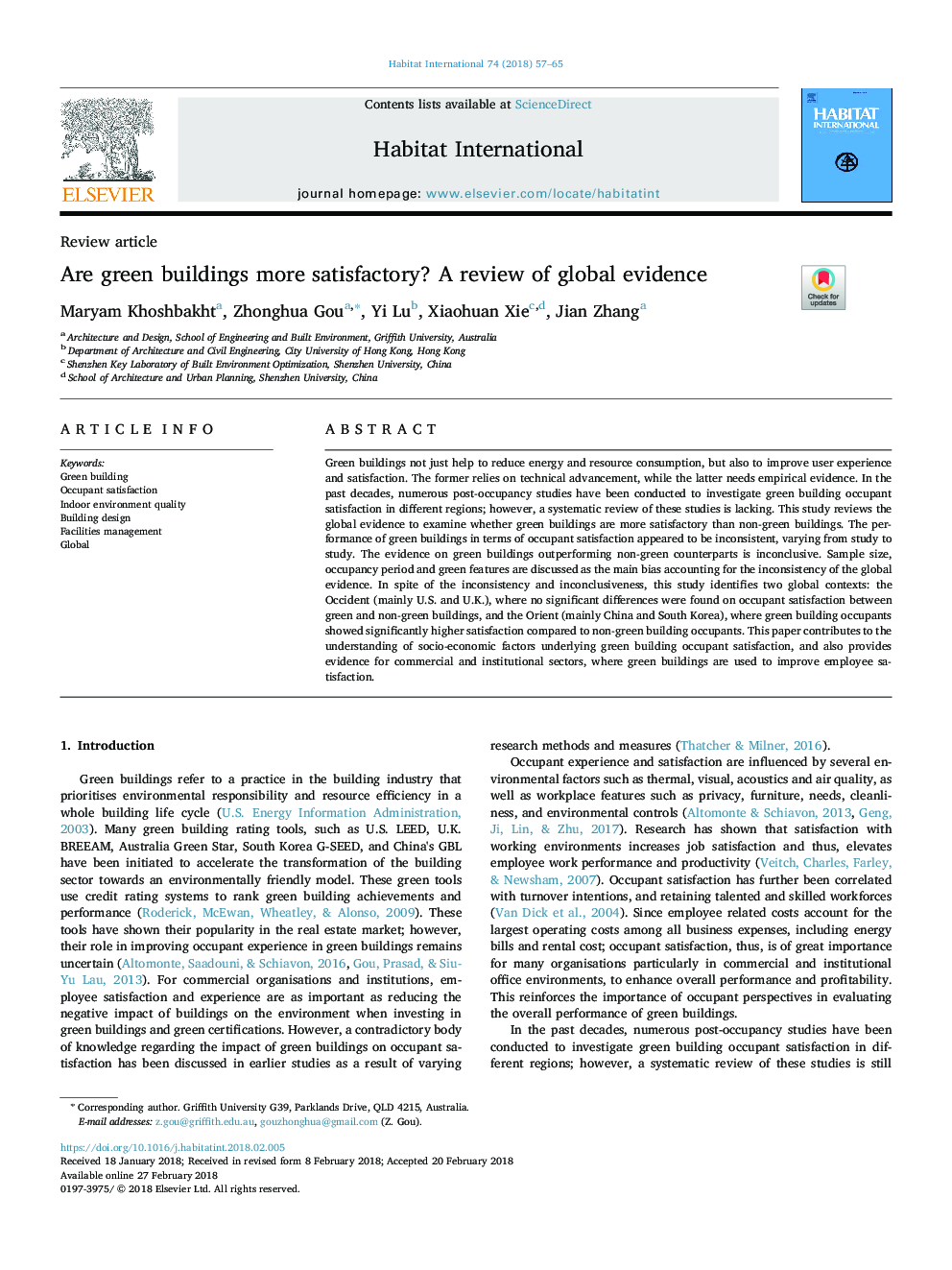| Article ID | Journal | Published Year | Pages | File Type |
|---|---|---|---|---|
| 7455105 | Habitat International | 2018 | 9 Pages |
Abstract
Green buildings not just help to reduce energy and resource consumption, but also to improve user experience and satisfaction. The former relies on technical advancement, while the latter needs empirical evidence. In the past decades, numerous post-occupancy studies have been conducted to investigate green building occupant satisfaction in different regions; however, a systematic review of these studies is lacking. This study reviews the global evidence to examine whether green buildings are more satisfactory than non-green buildings. The performance of green buildings in terms of occupant satisfaction appeared to be inconsistent, varying from study to study. The evidence on green buildings outperforming non-green counterparts is inconclusive. Sample size, occupancy period and green features are discussed as the main bias accounting for the inconsistency of the global evidence. In spite of the inconsistency and inconclusiveness, this study identifies two global contexts: the Occident (mainly U.S. and U.K.), where no significant differences were found on occupant satisfaction between green and non-green buildings, and the Orient (mainly China and South Korea), where green building occupants showed significantly higher satisfaction compared to non-green building occupants. This paper contributes to the understanding of socio-economic factors underlying green building occupant satisfaction, and also provides evidence for commercial and institutional sectors, where green buildings are used to improve employee satisfaction.
Keywords
Related Topics
Social Sciences and Humanities
Social Sciences
Development
Authors
Maryam Khoshbakht, Zhonghua Gou, Yi Lu, Xiaohuan Xie, Jian Zhang,
